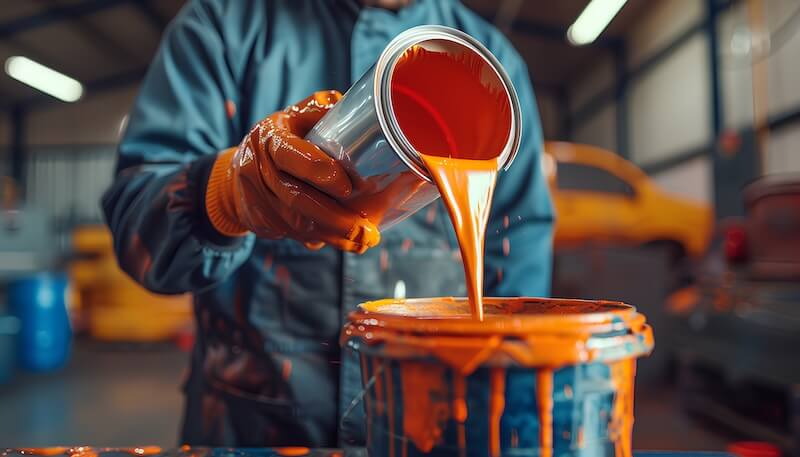You’ve just had your vehicle repaired after a fender bender or collision, and you’re ready to get it back on the road. The dents are gone, the structure’s straight, and the panel was replaced. But when you walk up to your car, something feels… off. One side of your vehicle looks just a little different. The color isn’t quite right. That’s when you know the paint wasn’t properly blended.
Paint blending is one of those behind-the-scenes steps in the collision repair process that can make or break the final look of your car. And at OHS Body Shop, we take it very seriously. It’s not just about making it pretty—it’s about restoring your vehicle to pre-accident condition so you never notice where the damage was. Our goal is always to make it look like the accident never happened. And that means getting the paint absolutely perfect.
So what exactly is paint blending, and why is it such a big deal? Let’s talk about the science, the process, and what makes a flawless finish possible.
First off, no two cars are painted exactly the same—not even if they rolled off the same assembly line on the same day. Paint fades over time due to sun exposure, weather, road salt, and even car washes. That means the “original” color of your car when it was new might be a few shades different now. Even if we get the exact manufacturer color code, it won’t necessarily match the rest of your vehicle today.
That’s where blending comes in. Instead of just painting the new or repaired panel and hoping it matches, we gradually blend the new paint into the surrounding panels. It’s a skilled, hands-on process that requires trained eyes, steady hands, and specialized tools.
Here at OHS, we start by mixing a custom paint formula that gets us as close as possible to the color your car is now—not just the color it used to be. Our paint technicians are trained in color theory and use digital spectrophotometers to measure your car’s current color. That gives us a precise baseline to work from. But paint isn’t just color—it’s also about finish, texture, and depth. And that’s where human skill makes all the difference.
Once we apply the new paint to the repaired panel, we extend that same color into the adjacent panels—just slightly. This soft edge blending is done in very thin layers, feathered out so that your eyes can’t pick up where the new paint ends and the original paint begins. Then we apply a clear coat over the entire blended area, giving it that glossy, uniform finish.
It’s easy to think paint blending is just an aesthetic issue. But we’d argue it’s more than that. Poor blending can make your car look obviously repaired, which affects resale value. More importantly, it can signal rushed or careless work. If the paint job was sloppy, you have to wonder what else might’ve been skipped or done halfway during the repair.
We’ve had customers bring in vehicles that were “repaired” elsewhere, only to end up with blotchy paint that doesn’t match, or clear coat peeling within a year. Unfortunately, cutting corners in paint work is more common than people think. That’s why we focus on quality, and why we take the time to do it right.
One thing we often explain to customers is why we might need to paint more than just the damaged panel. People understandably want to keep costs down, but blending requires us to treat surrounding areas too. For example, if we replace your front fender, we’ll likely need to blend into the front door and possibly the hood. It’s not upselling—it’s the only way to guarantee a seamless color transition.
Montana weather can also be rough on paint. From blazing sun to harsh winters, vehicles here go through a lot. That’s why we use premium automotive paints and clear coats that are designed to hold up over time, resist fading, and protect your vehicle’s exterior for the long haul.
At OHS Body Shop, our team includes certified refinish technicians who understand not just the technical side of paint blending, but also the artistic side. They’ve trained for years to be able to spot the subtlest shade variations, and they know how to adjust the formula, spraying technique, and clear coat layers to match your car perfectly.
To us, the job isn’t done until you can walk up to your car, look at it from every angle in the sunlight, and never see where the repair happened. That’s what real collision repair is all about—not just fixing the damage, but restoring the pride you had in your car before the accident.
So, if you’ve been in a collision and want your vehicle to look as good as new—not just structurally, but visually—bring it to the pros who know how to blend paint the right way. At OHS Body Shop, we’ll make sure the only thing you remember about your accident… is how great your car looked afterward.

